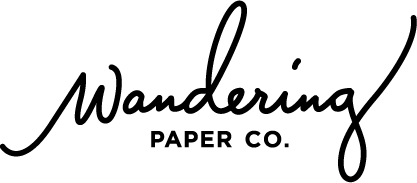How to Optimize your Site for SEO
While I was redesigning my website, I took the opportunity to do an SEO overhaul as well! I did lots of research and learned a lot in the process, so I thought I’d share what I learned here! Read on to learn some easy ways to optimize your site for SEO.
Make a List of Keywords
The first step in SEO optimization is to make a list of keywords for your website. Ask yourself ‘how would I search for what I’m selling?’ and write down any words you can think of, from general to specific. For example, if I were searching for block prints, I might type in ‘original block prints’ or I might search for something more specific, like ‘Venice Block Print.’ If you have an Etsy store, or existing analytics with your website, take a look at the search terms people are using to find your site, and use these as a starting point.
Once you have your list of potential keywords, it’s time to narrow them down. There are two important factors to consider when choosing keywords. The first is relevance. It doesn’t matter how popular a search term is if it has nothing to do with your site. When people don’t find what they are looking for, they click away from your site quickly, which hurts your SEO. So cross out any keywords that aren’t relevant to your subject matter.
The second factor to consider is competition. When selecting your keywords, it’s important to have a mix of high-competition keywords and low-competiton keywords. What does this mean? For example ‘block prints’ is a high competition search phrase because there are tons of artists out there who make block prints. But ‘Hmong Block Print’ is a low-competition search phrase because it’s very specific, and not many people search for it. This is why ‘Hmong’ is a keyword that drives a lot of traffic for me—there just aren’t a lot of Hmong block prints out there to compete with.
Since it’s important to combine high and low competition keywords, ‘block prints’ and ‘hmong’ are both good keywords for me. Another way to think about this is to choose a good mix of general and specific words and phrases.
Rewrite Your H1 Tags
Once you have your keywords list, it’s time to implement them on your site! The first place to do this is in your H1 tags—these are your webpage headers and blog titles.
Go through your headers and blog titles and rewrite them using your targeted search terms. For example, instead of titling this post ‘Redoing My Website’s SEO,’ or something sarcastic, like ‘A Highly Entertaining and Fun Post on SEO’ (false!) I called it ‘How to Optimize Your Site for SEO’ because that’s how someone might search for this content.
Warning—don’t ‘keyword stuff’ your titles! Google search will recognize this and it can hurt your search engine ranking. A good rule of thumb is to be sure to use your keywords, but write for people first.
Rename your image files
For example, I would name an image of my Paris Houses Block Print paris-houses-block-print.jpg. Be sure to separate your words with hyphens like the example and not underscores. You’ll have to re-upload all your images to your site, but it is worth it!
Include links to other sites in your content
Work relevant links to other reputable sites into your website content. For example, when I’m writing a block printing tutorial, I always link up the materials to sites where you can purchase them. It’s helpful for the reader, plus it’s helpful for my SEO to have links in my post!
Tip: When you link to an external site, be sure to describe what you’re linking to. For example, I would write ‘buy Speedball rubber blocks’ and use that phrase as my link, instead of writing ‘click here to buy Speedball rubber blocks.’
It also helps when reputable sites link to YOUR content. Guest blogging can be a good way help out a fellow blogger or business owner, and get a link back to your site in return.
Include links to other pages on your site
Whenever I mention a previous post I’ve written, I always include a link, for the same reason as above!
Write a Blog
Blogging is great for SEO! If you aren’t already blogging, you should start. Google likes websites that are continually generating new quality content (remember, quality is more important than quantity!) Use your keyword list to brainstorm ideas for related blog posts. Try to keep in mind what your audience is searching for. What kind of questions do they have? What do they need help with? You want to create content people will want to share. Maybe it’s a helpful ‘how-to’ article or infographic.
Disclaimer: I am by no means an expert in SEO—I’m just sharing what I’ve learned and implemented on my site! There is a lot more to search engine optimization than I’ve written here, but these tips are a good way to get started. Do you have any SEO tips you’d like to share? Please add them in the comments!
Thanks for reading!
If you enjoyed this tutorial, sign up for my newsletter to receive more tutorials and studio updates in your inbox.
